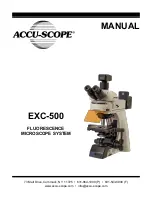
LSM 710 and LSM 780
CENTER SCREEN AREA / IMAGE CONTAINERS - …
Systems
3D View (Image VisArtplus)
Carl Zeiss
02/2010 M60-1-0025
e
189
−
Roughness
(for Shadow mode only): You can also influence the roughness used to display the surface
of the image structures. This changes the plasticity of the display (relative scale between 0 and 1). This
setting quickly can produce artifacts if pixels reach saturation. The degree of roughness should be
reduced accordingly.
−
Brightness
can be controlled via input field or slider bar.
−
Distance
determines the distance between light source and volume. At a value of 0.1 the light source
is close by, shadow effects etc. are minimal. The further away the light source, the more prominent
the shadow effects become ("evening shadows are longer").
−
Azimuth
describes the angle of the light source above the virtual horizon and can be set by entering
values directly or by slider (value range: 0° to 90°).
−
Elongation
describes the horizontal direction of lighting and can be set by entering values directly or
by slider (value range: -180° to +180°).
−
Channels:
The settings are entered separately
for each channel using sliders or by entering a
numerical value in the corresponding input
field. To select a channel click on the
corresponding button (labeled with the channel
color and number).
−
Distance
(for Shadow mode only) sets the distance between the 3D object and the virtual background
on a scale from 0.5 to 3.0.
−
Color
: The color of the background can be freely chosen from a table which appears when clicking
the color chooser button
.
−
Viewing angle / Scale Z:
In hardware
accelerated modes, you can change the
projection angle used to view the scene
anywhere between 10
°
and 80
°
. Use the slider
or enter the
Angle
into the input field. The
effect of this on the display perspective is similar
as if you were viewing the 3D image through a
telephoto or wide-angle lens.
The Z-Scale of the dataset can be altered
interactively by using the slider. The slider
ranges from a factor of 0.1 to a factor of 5.
−
Background:
The background color can be
altered by using the pull down menu. For some
3D Objects it can be beneficial to display a
Structured background
for better orientation
within the dataset.
Fig. 214
Channels
Fig. 215
Viewing angle
Fig. 216
Background
















































